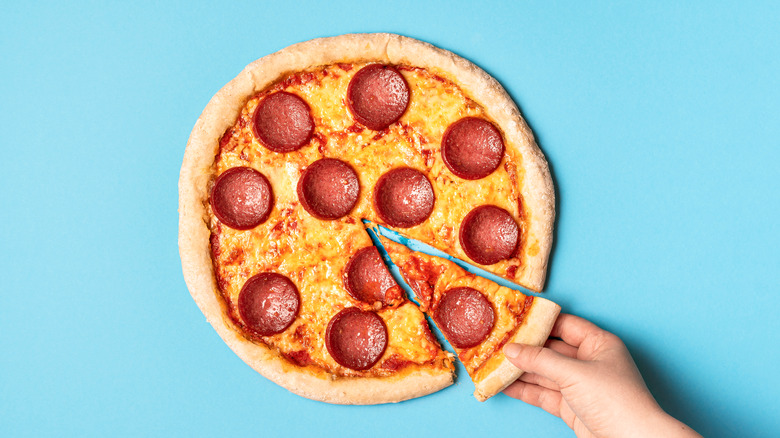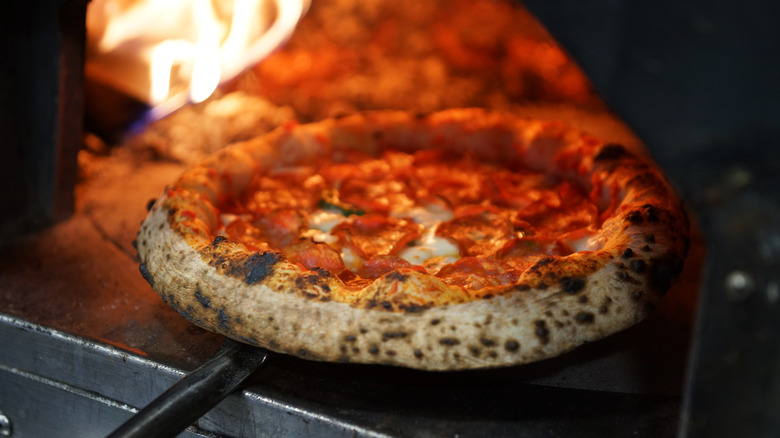Why Does Some Pepperoni Curl When Cooked?
Pizza is one of the most popular foods in the United States, and indeed the world. And while there are many different styles of pizza to choose from, which often varies depending on geography, most people agree that pepperoni is the best topping to have on a pizza — according to several surveys, including ones by USA Today and YouGov, pepperoni is easily the most popular topping in the country.
These days, it seems there's a growing preference for a certain type of pepperoni, specifically, one that curls up into little pepperoni cups when cooked. Also known as "cup and char" pepperoni, it's a style that's long been popular in Buffalo and parts of the Midwest, before it started showing up in pizzerias and Instagram feeds all over New York City and elsewhere, notes Eater New York. Fans of curling pepperoni, which include J. Kenji López-Alt, argue that they taste better than their flat-laying, and more traditional, counterpart — the cup serves to perfectly contain the pepperoni grease, while its crispy edges add a delightful ("almost bacon-like") crunch (via Serious Eats). Which brings up an interesting question. What exactly causes some pepperoni, but not others, to curl when cooked?
Several factors affect whether pepperoni will curl when cooked
To answer that question, J. Kenji López-Alt took a scientific approach and conducted numerous experiments with different types of pepperoni and cooking methods to determine just what causes pepperoni to curl or cup when cooked, which he reports in Serious Eats. His conclusion: while several factors are at play, the most important ones were the type of casing, uneven cooking temperatures, and thickness of slices.
How meat was stuffed into a casing affects its shape and how well the slices will curl — pepperoni in natural or collagen casing will curl better. The heat difference from uneven cooking also leads to curling: the top of the pepperoni slices receives more heat than the bottom, which is insulated by cheese and pizza dough, leading the top to cook faster, which causes the pepperoni slice to shrink and curl inwards (and the edges to cook even faster). The thickness of the pepperoni is also important, with the ideal thickness for curling between 0.1 inch and .225 inch. So if you're a fan of curling pepperoni, be sure to look for natural or collagen casing and slice your pepperoni to a medium thickness for maximum curling potential.

